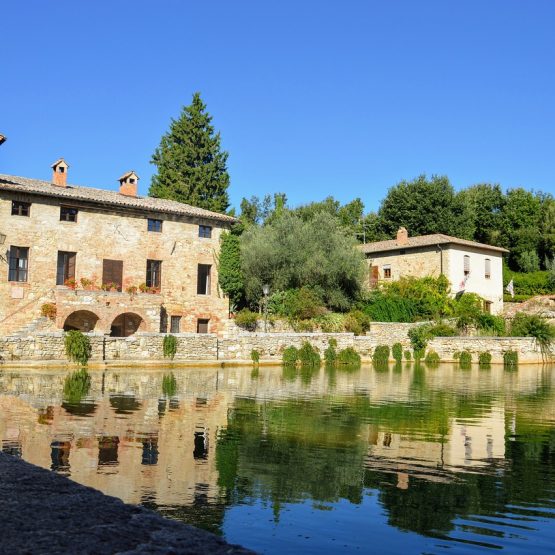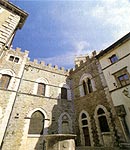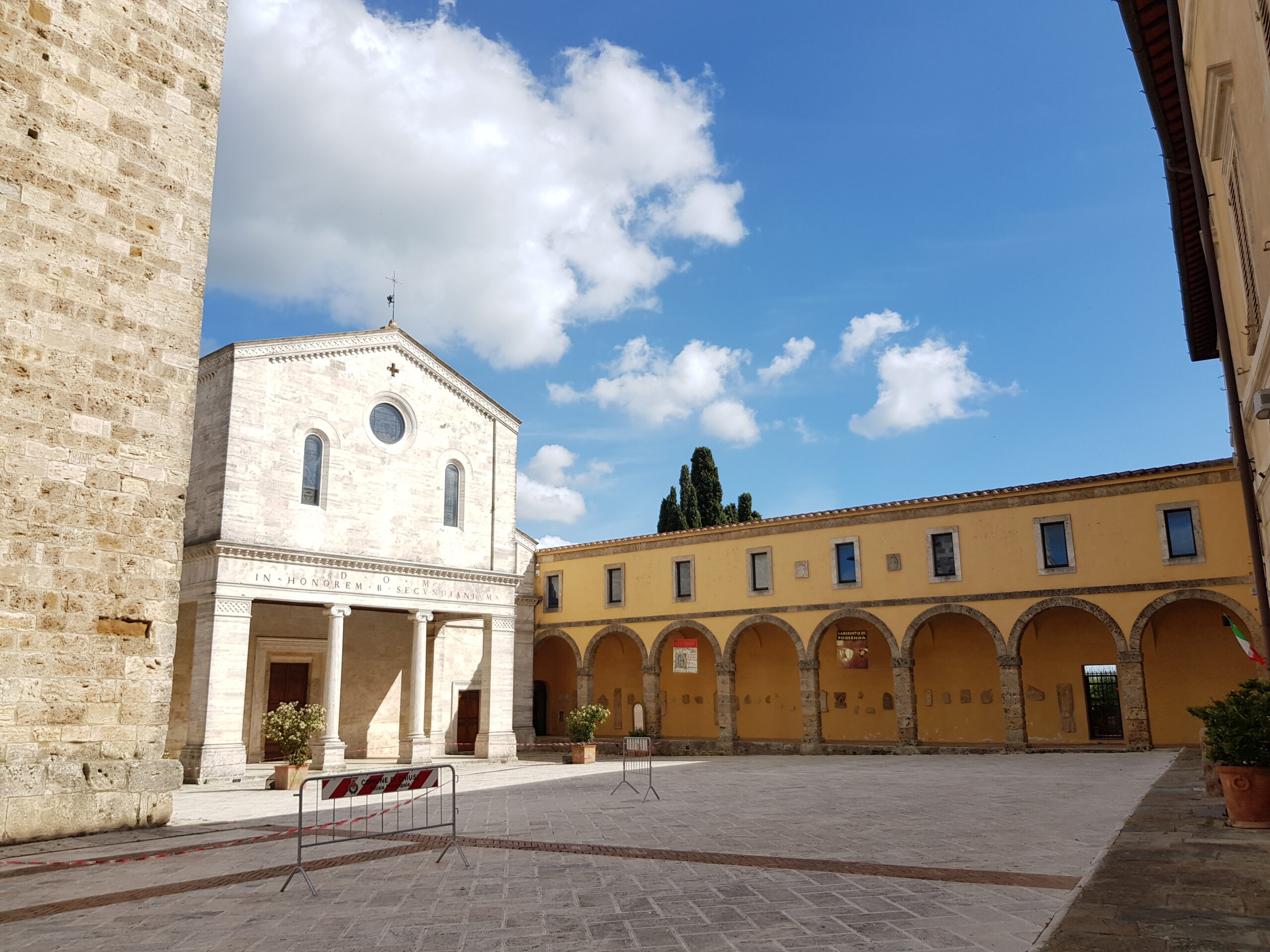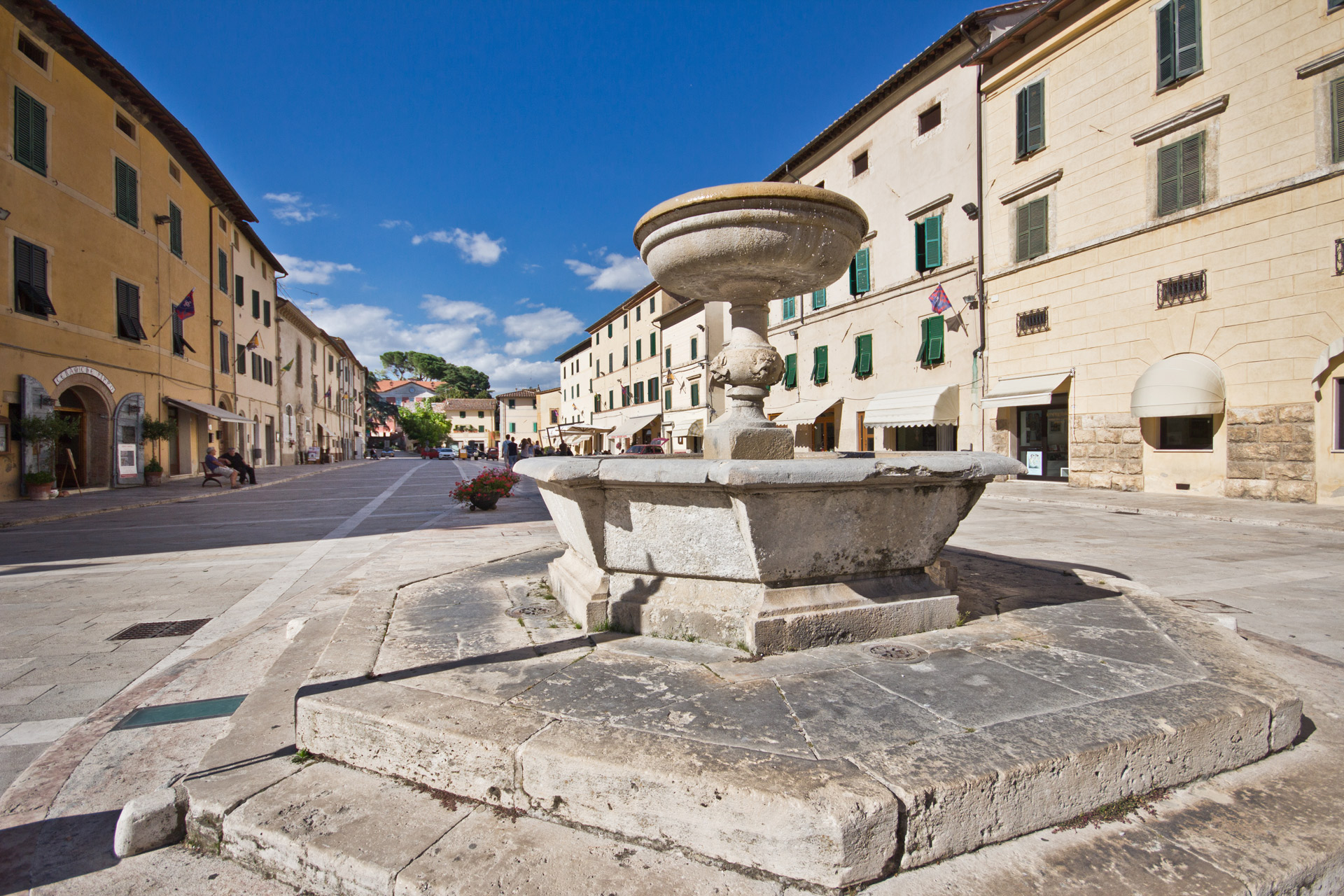Originally an Etruscan town, it acquired importance thanks to the neighbouring Via Franchigena. Federico Barbarossa, in 1154, received the ambassador of Pope Adrian IV here and this event is recalled in the “Festa del Barbarossa”, 3° Sunday of June. In 1167 it was seat of the Imperial Vicar. The Florence of Cosimo I de’ Medici purchased it in 1559. The Collegiata of SS. Quirico and Giuditta is in the Romanesque style: it has three portals and one whit faces southern is attributed toGiovanni Pisano. Inside is found the polyptych of Sano di Pietro and a Chorus from 1432-1502. Palazzo Chigi is from the XVII century. The “Horti Leonini”(16 th century) are one of the first examplesof of Italia Garden style: from August to October there is an exhibition of sculpture “Forms in green”. The Romanesque parish church of S. Maria Assunta was, perhaps, constructed on the remains of a pre- Cristian temple. The inside of the church of S. Francesco holds two wooden polychrome statues and a Robbia’s Madonna. The area of Bagno Vignoni was known about from roman times through the benefits of the waters from its spring which gush forth at temperatures of more 50°C. and are gathered in the big basin which lies at the centre of the town and gives it its evocative appearance. There is a small sanctuary dedicated to S. Caterina from Siena situated at the side of the basin. The castle of Vignoni looks down upon the town and can be roached either by S. Quirico or by Bagno Vignoni: a natural walk which can be made on foot.





